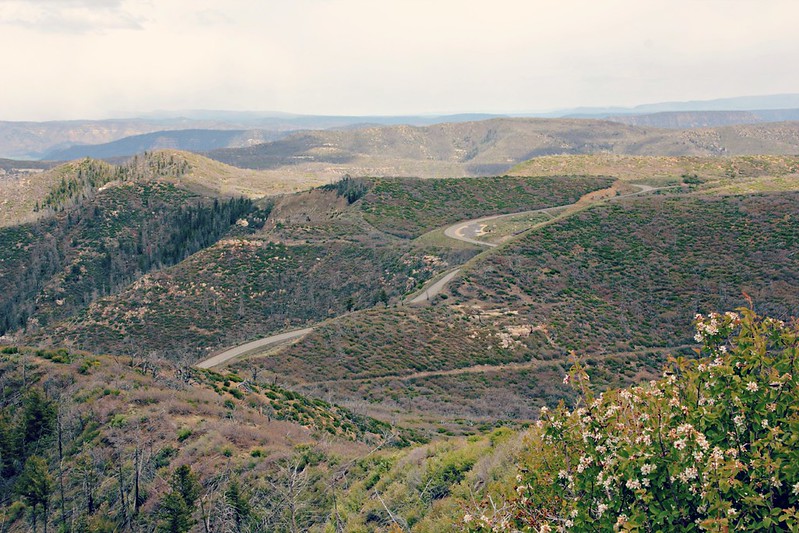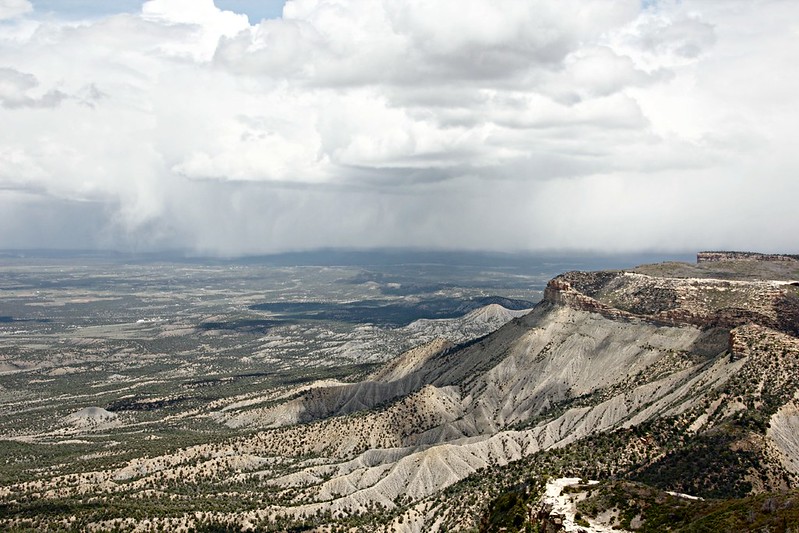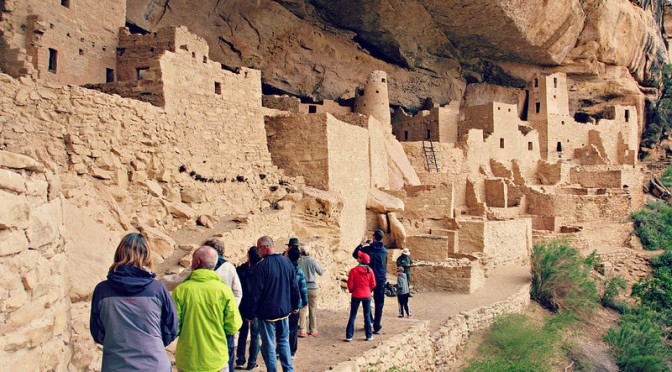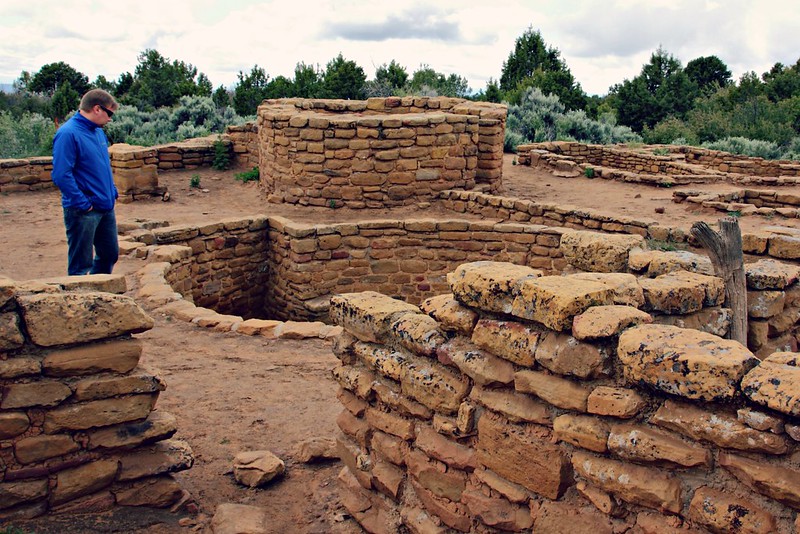Mesa Verden National Park is located in South-West Colorado near the border of New Mexico. It’s the only national park in the United States designated to protect works of humans instead of Mother Nature, and it’s also an UNESCO world heritage site. If you’re roadtripping in the area, there’s no excuse to pass by these magnificent American Indian ruins that the Ancestral Pueblo people inhabited centuries ago. You could easily spend a couple of days exploring the park – we spent a full 24 hours there – but even a short visit is worth it, as long as you take a little time to plan it.
First: Visitor Center & which tour to take?
It’s always a good idea to start off a national park visit by stopping at the Visitor Center – and especially so at Mesa Verde. This is because Mesa Verde Visitor Center sells tickets to the ranger-led cliff house tours, and this should be the highlight of your trip. You can purchase tickets for the tours up to two days in advance, so if you’re arriving to the area already the night before, it makes sense to drop by the Visitor Center to get tickets fo the next day’s tour. Alternatively, you can purchase tour tickets from Colorado Welcome Center in the town of Cortez.
By the time we arrived at around noon, the two most popular tours had already almost sold out for the day. We managed to snatch tickets for the Balcony House Tour at 4.30 pm (first available slot) and left Cliff Palace Tour for the next morning. These basic tours are $4 per person and can be only bought in person. Specialty tours are sold also at recreation.gov, which I recommend to check out well in advance. I would have personally wanted to visit Cliff Palace at sunset for a special photography tour, but it had already sold out a month before!
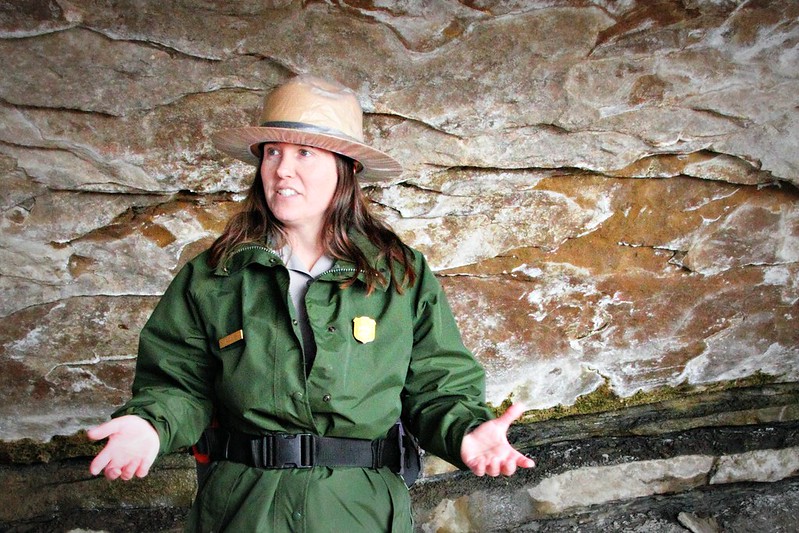
Balcony House Tour
Balcony House is the more challenging of the two basic tours: you’ll have to climb several ladders as well as crawl through a narrow corridor that gave me the jitters beforehand. In the end, though, it was my favorite of the two thanks to its active hands-on nature – or rather, hands-off, touching the ruins is not allowed! There are replicas of the ladders and corridor at the Visitor Center, so you can decide for yourself whether the tour’s the right fit for you. The ladders were exactly the same as on the tour, but the corridor was far more accommodating on the tour, which was VERY nice.
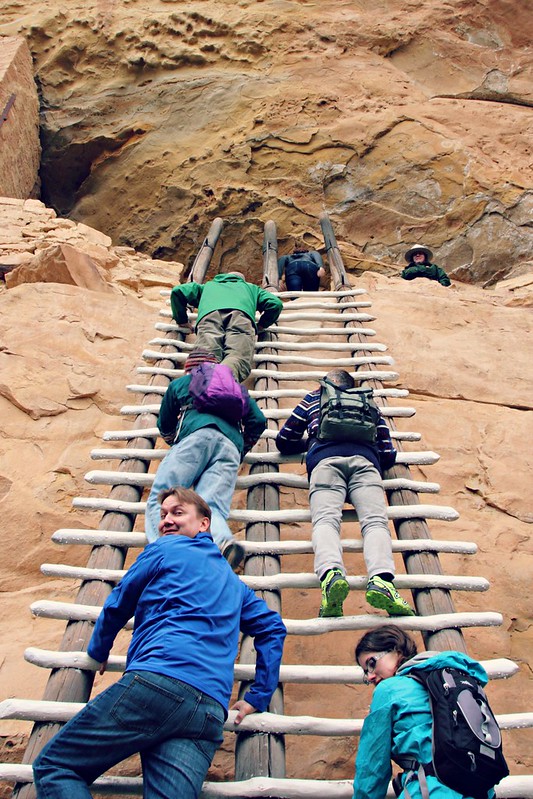
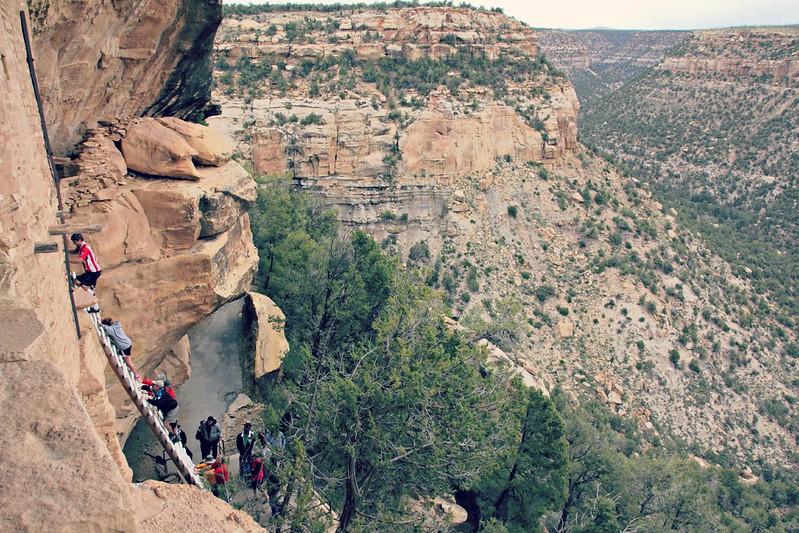
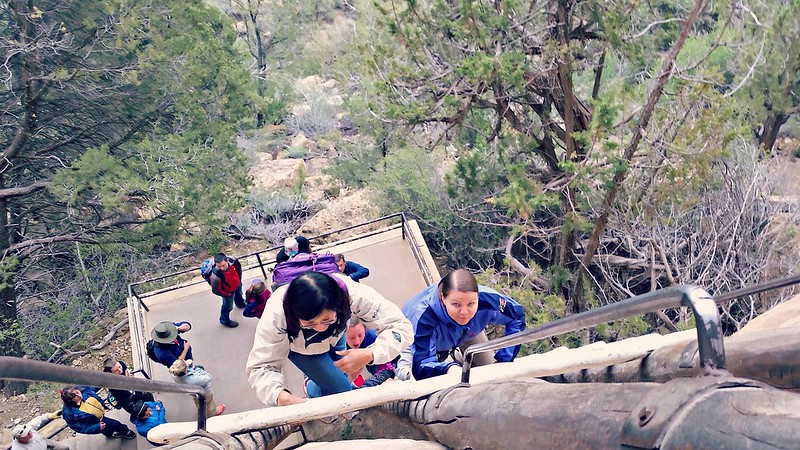
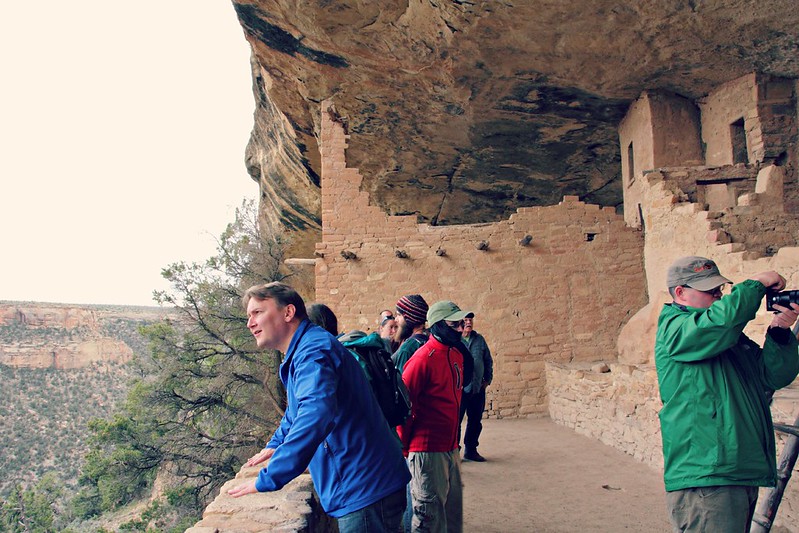
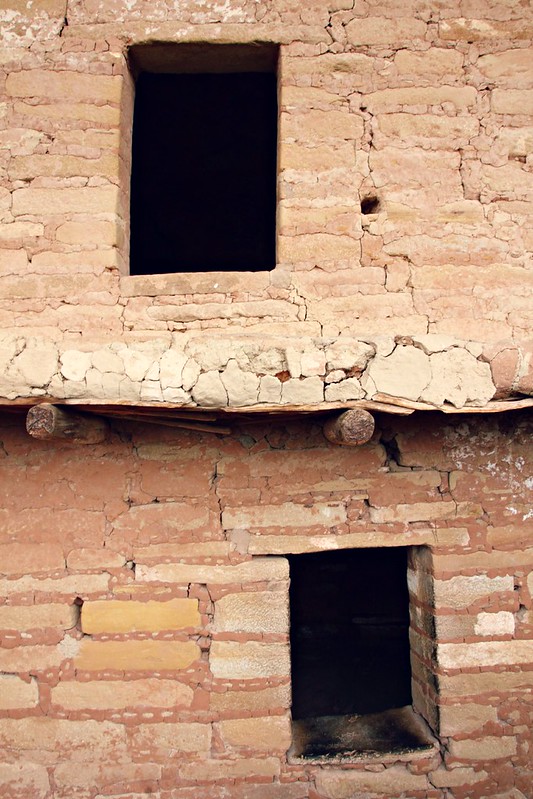
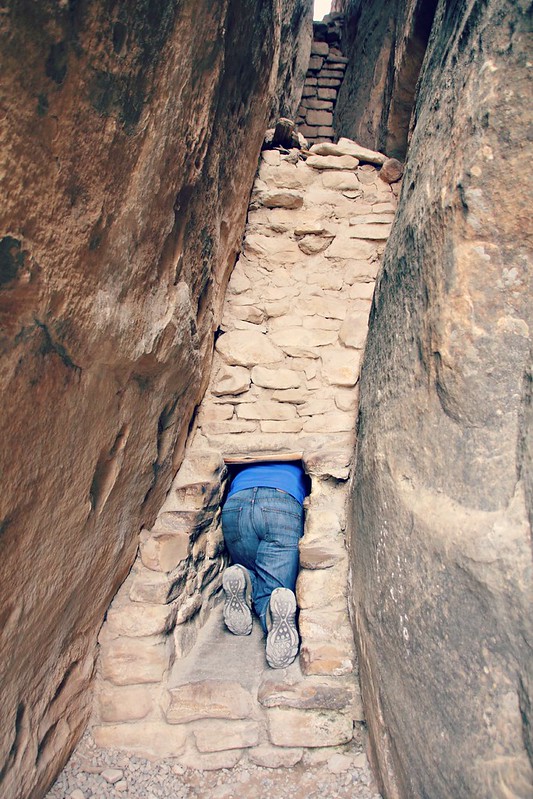
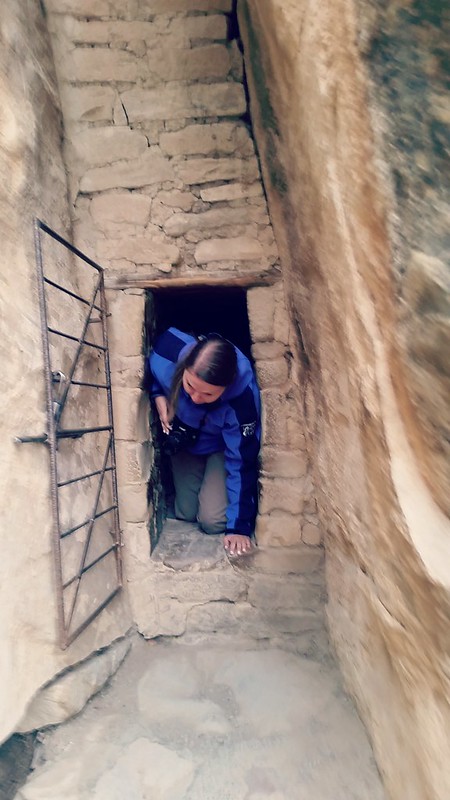
Balcony House has around forty rooms, which makes it average in terms of size for Mesa Verde cliff houses. The ranger on the tour told us tales of Mesa Verde history, pointed out details in Balcony House (murals, kivas), and explained in detail the art of dendrochronology, also known as tree-ring dating, which helped the scientists place the cliff houses on a timeline. With the lack of written history from the Ancestral Pueblo people, anthropologists have resorted to studying their descendants, the Pueblo and the Hopi people, to make educated guesses on centuries-old traditions, and the ranger went on to explain a bit about the rites of passage of the Pueblo.
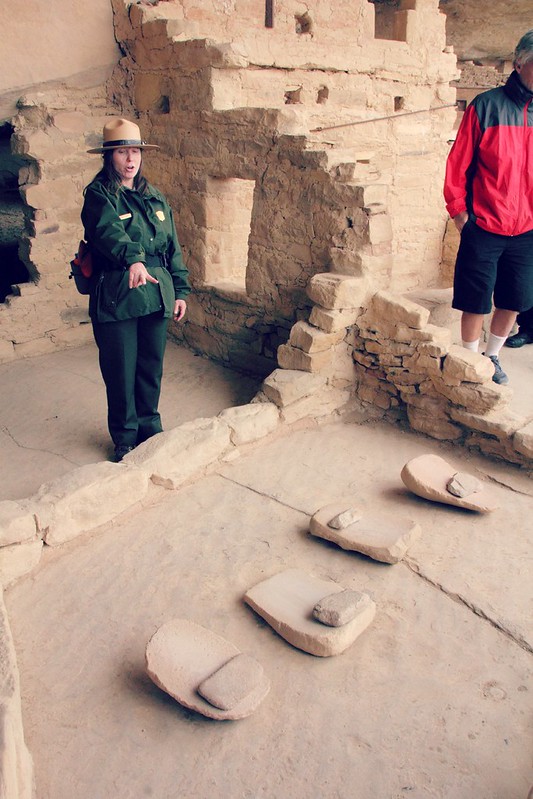
Corn was and still is a staple in the Pueblo diet. It’s a hard day’s work grinding dried corn, and this work is traditionally done by the women. The Hopi Indians’ female rite of passage centered on this practice: girls are locked in small groups in a dark room to grind corn four days in a row. Talking, sleeping and food breaks are allowed, but light is not, and no outsider can lay their eyes on the girls. After four days, the older women wash the girls’ hairs ceremoniously and style them on two buns above their ears, after which the girls can enter the society as women of marrying age. To me, the buns hold an odd resemblance…

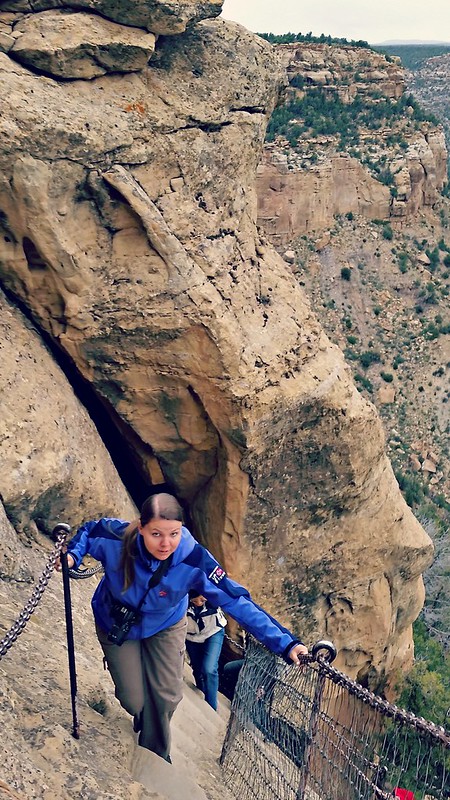
Cliff Palace Tour
Cliff Palace was the administrative center of Mesa Verde: 150 rooms, 23 ceremonial kivas, but only around a hundred residents. Not that administrative centers tend to have that many residents… In any case, it’s the largest cliff dwelling in Mesa Verde, and the route is easier than the one to Balcony House with only a couple short ladders and no standing on high cliffs.
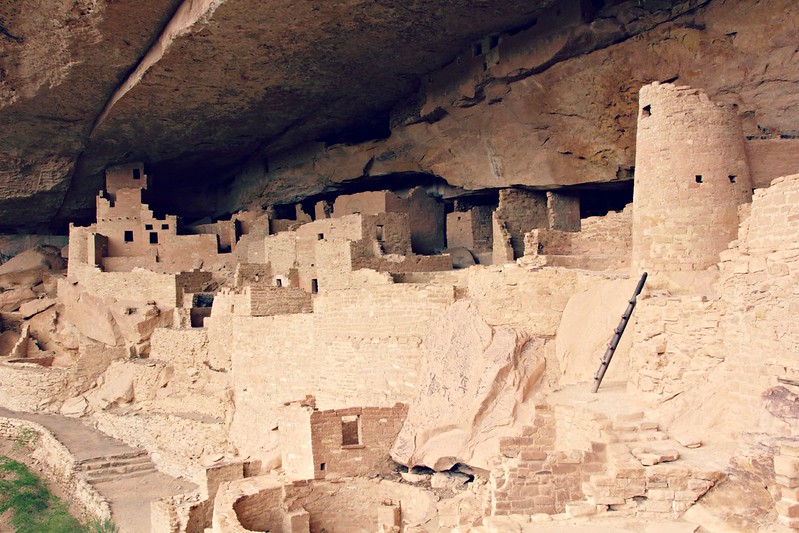
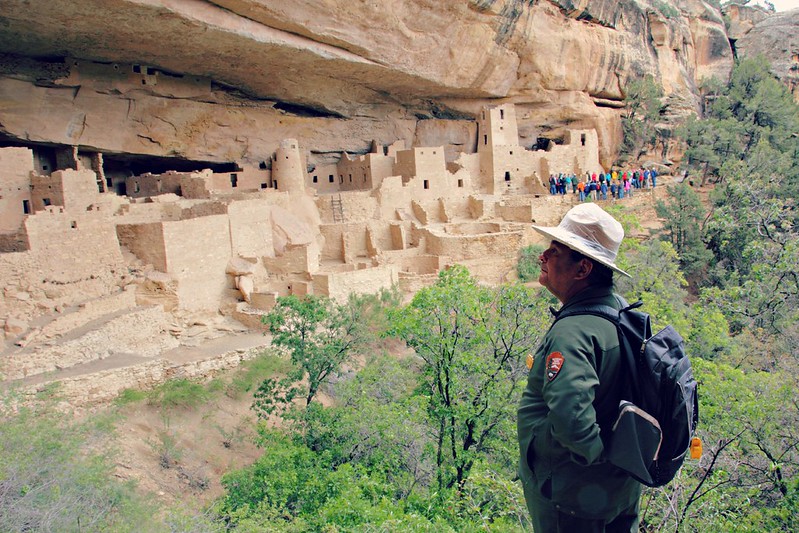
Our Cliff Palace Tour really brought out the differences between rangers. The ranger at Balcony House was informative, shooting out facts one after another with so many details you had to keep focused constantly on the talk. The Cliff Palace ranger, on the other hand, let the sights speak for themselves, kept moments of silence to “enjoy the views” and philosophically pondered the Ancestral Pueblo way of life. I’m guessing this was due to the fact that the Balcony House ranger was working her 10th summer at Mesa Verde, wheres the Cliff Palace ranger had just started.
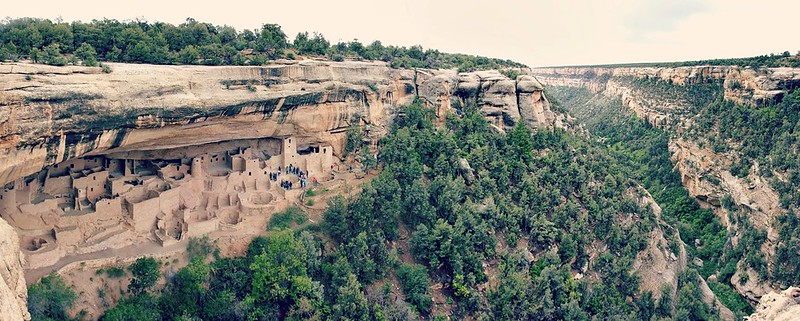
Spruce Tree House
If you don’t have time to attend the tours, go see Spruce Tree House. In fact, even if you do have time to attend the tours, go see Spruce Tree House anyway: Mesa Verde isn’t Mesa Verde with a Spruce Tree House visit. It’s the only cliff dwelling in the area, where you don’t have to take a tour to get up close, and you even have a chance to climb down a restored kiva.
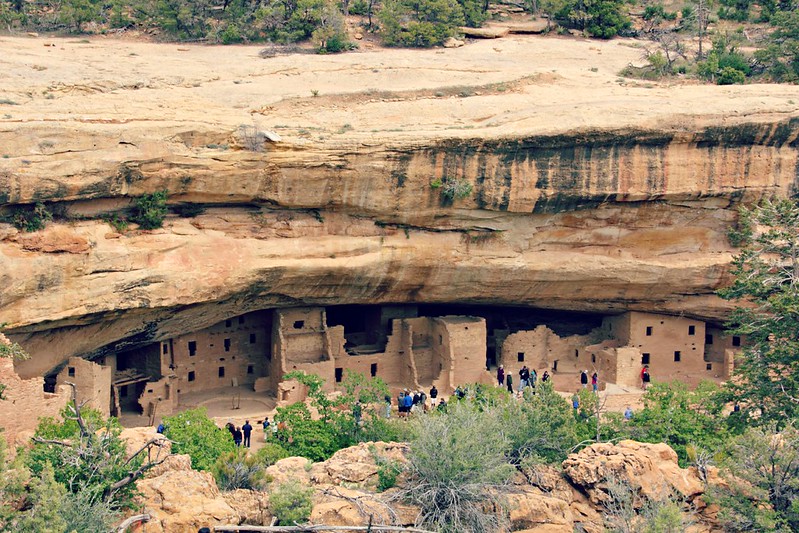
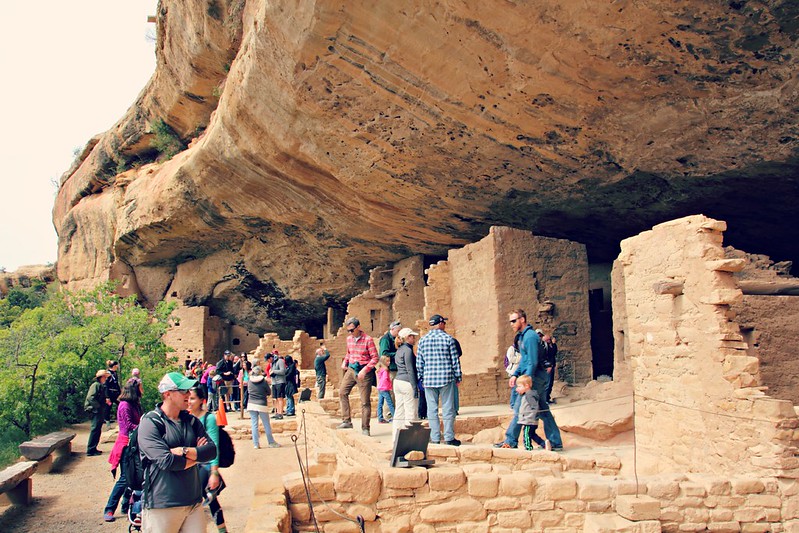
We also thought about hiking Petroglyph Point Trail (4km) that leaves from close to Spruce Tree House, but the rainy weather made us think again. Instead, we popped by Chapin Mesa Archelogical Museum, which I don’t recommend if you’re short on time: you’re here to look at the buildings, not at stuff in vitrines.
Mesa Top Loop
This one-way road can take anywhere from half an hour to two, depending on how much you stop to take a look around. As wannabe-archaeologists, we stopped everywhere we could to marvel at the more-than-millennia-old dwellings, the oldest in the area, which would have looked like holes in the ground without the interpretive signs. This is a good tour to do on a rainy day, since most of the sights are indoors or at least under cover. If you go here, pick up a guide leaflet from the Visitor Center for $0.50.
If you’re too busy to stop everywhere, at least stop at the lookout at Sun Point View, where you have a great view of several cliff dwellings at once.
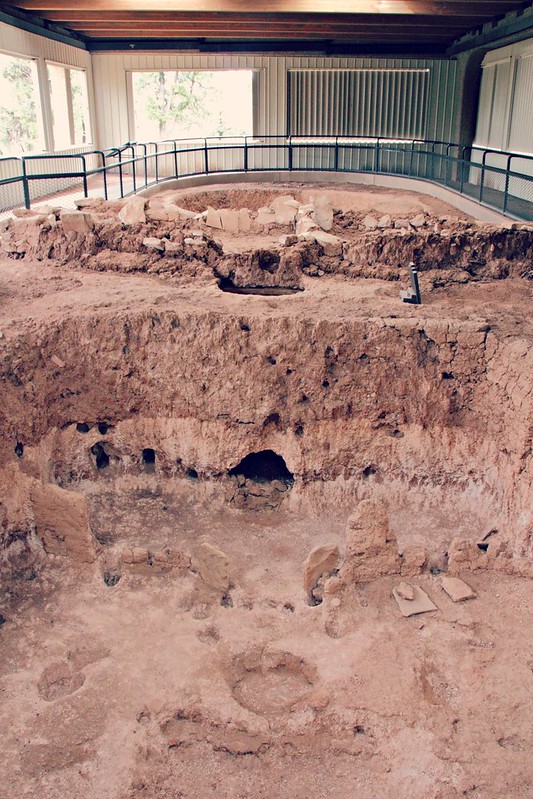
Far View Village Pueblos
Just when we thought we had already seen everything, here comes Far View. This is the place for Mesa Verde’s largest mesa top ruins, whole village pueblos right next to each other, and many of them were only abandoned at the same time as the cliff dwellings. At this point, we were already a little tired of all the ruins and in a hurry to make it to the next stop on our trip, but we stopped briefly enough to figure out that if we ever come here again, the short walking trail here is a must-do. Highly recommended you leave some time for this.
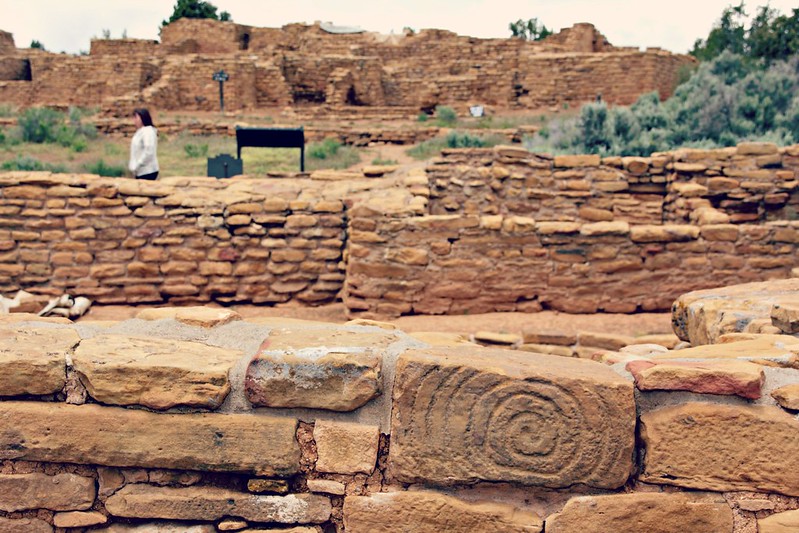
Best Views: Park Point Overlook
Although Mesa Verde is known for its historical significance, you can’t ignore the nature and the strikingly beautiful mesas. The best place to take these in is Park Point Overlook, the highest point in the park, with 360-degree views to every direction. Because of this, the park’s fire ranger station is situated here, and during dry season there’s a 24/7 guard here to watch out for wildfires. Several large wildfires have scorched the area in the past couple of decades, and long-ago burned trees line the roads.
